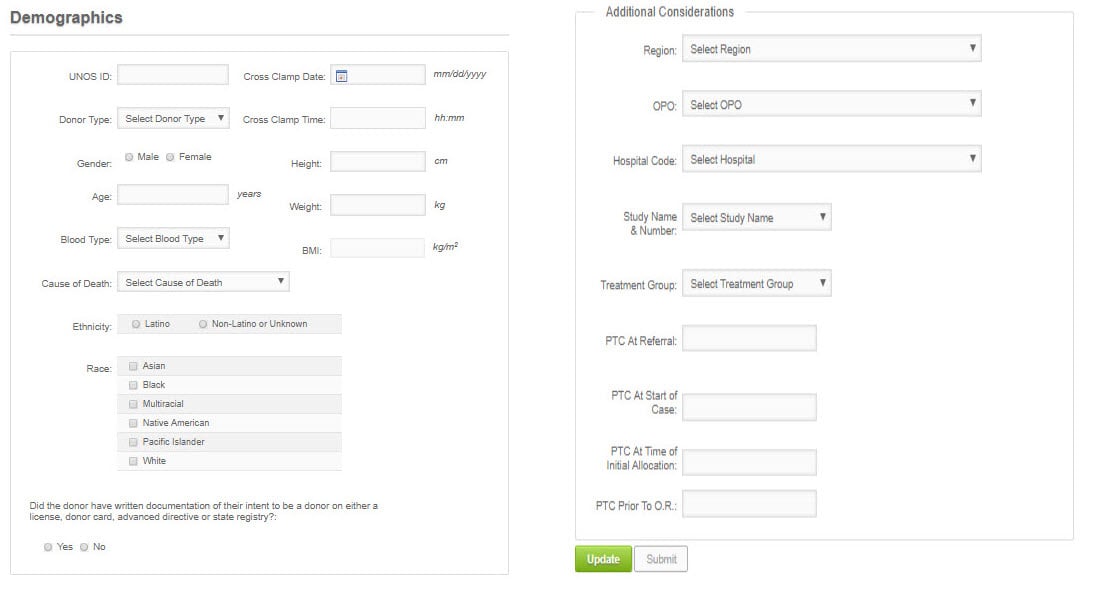About the DMG Registry
A checklist for critical care practices
In order to aid the management of donors after brain death, OPOs use a checklist of critical care end points, also known as donor management goals (DMGs), during the post-authorization phase of management. Many hospital catastrophic brain injury guidelines (CBIGs) incorporate similar physiologic parameters included in the DMG Bundle, as they reflect good critical care practices that would benefit all patients.
Prior studies have assessed the impact of meeting a DMG bundle (defined as achieving any seven of nine physiologic parameters), with results consistently demonstrating an association with more organs transplanted per donor (OTPD) as well as improved post-transplant graft survival. In 2012, UNOS built the DMG Registry Web Portal to facilitate prospective data collection, reporting, and sharing of best practices with participating OPOs. It serves as a platform for OPO quality assurance and process improvement projects, hospital development and donor intervention research.
Use of Donor Management Goals (DMGs) has brought standardization to the care we provide to donors.
Critical care endpoints
Meeting a DMG bundle correlates with more organs transplanted per donor and improved graft survival.
| Benchmarks | Parameters |
|---|---|
| 1- MAP | 60 -110 mmHg |
| 2- CVP | 4 - 12 mmHg |
| 3- EF/SF | EF ≥ 50% or SF ≥ 30% |
| 4- ABG | PH: 7.3-7.5 |
| 5- P:F Ratio (PO2/(FiO2/100) | ≥ 300 |
| 6- Sodium | ≤ 155 meq/L |
| 7- Glucose | ≤ 180 mg/dL |
| 8- Urine Output | ≥ 0.5 cc/kg/hr |
| 9- Low-dose Vasopressors | ≤ 1 pressor used and low-dose: Dopamine ≤ 10 mcg/kg/min, Neosynephrine ≤ 1 mcg/kg/min, or Norepinephrine ≤ 0.2 mcg/kg/min |
Partnering to build a user-friendly portal
In 2012, Region 5 partnered with UNOS, to develop a web-based data entry system—the DMG Registry Web Portal—replacing an Excel tool with an efficient, accurate, and user-friendly system. The participating OPOs expanded beyond Region 5, bringing in data from nine distinct OPTN regions. OPOs utilize the Web Portal for quality assurance, performance improvement, hospital development, and research. It is an online tool which has successfully been used to track donor critical care data and the primary, de-identified recipient outcomes that are allowed according to the OPTN data sharing policy.
Learn More
Meet the Leadership and Advisory team members and learn about governance.






